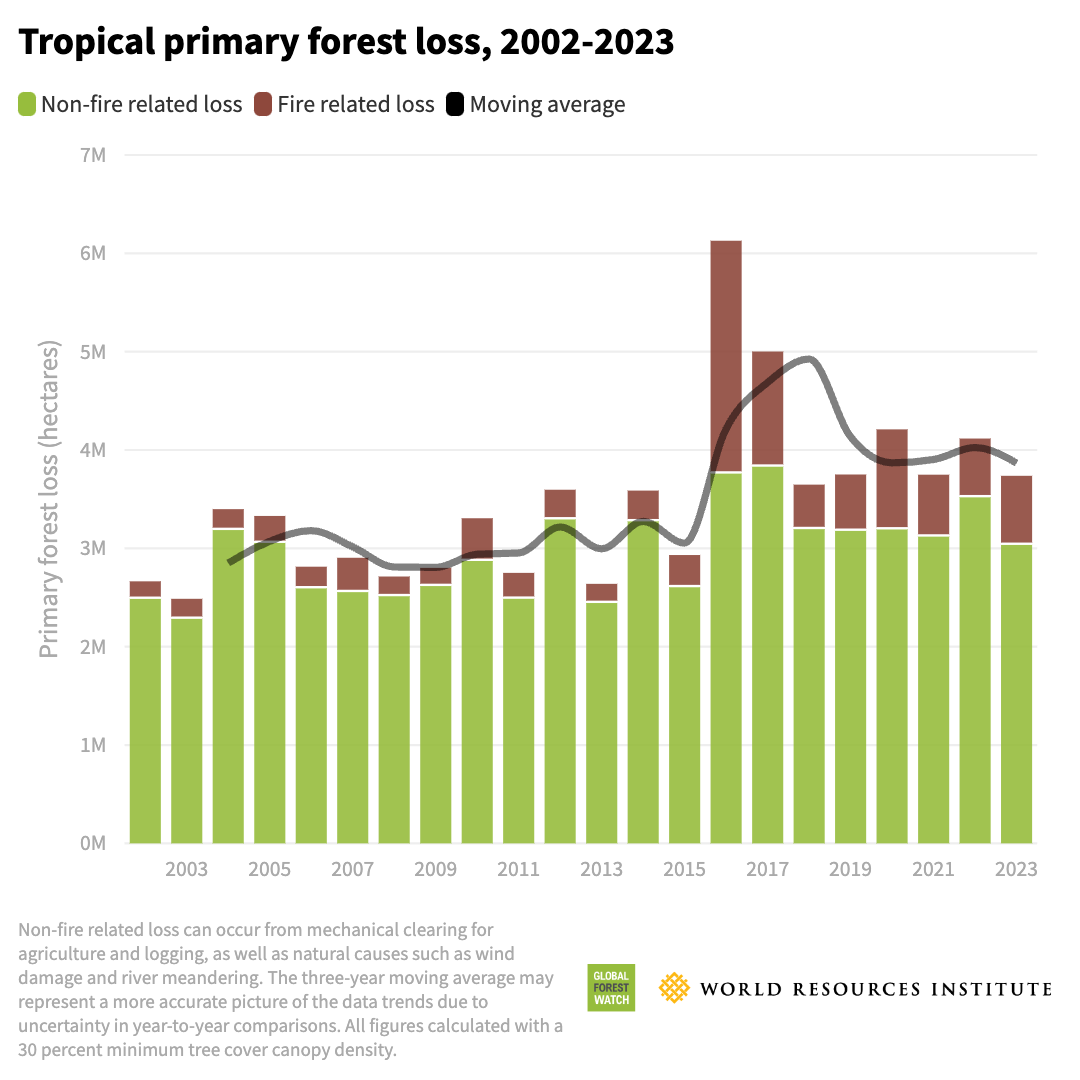Global Forest Watch: Positive Trends in Brazil and Colombia Offset by Increases Elsewhere in 2023
This 2023 update of the forest loss map, including forest loss due to fire, from GLAD Lab's Research Professor Peter Potapov, Assistant Research Scientist Svetlana Turubanova and Associate Research Professor Alexandra (Sasha) Tyukavina shows significant reduction in forest loss in Brazil and Colombia, yet the world remains off track to meet 2030 forest goals, according to Global Forest Watch’s annual data analysis.
Brazil and Colombia witnessed significant reductions in primary forest loss in 2023, showcasing the efficacy of political will and policy changes in forest conservation, as per new data from the Global Land Analysis and Discovery (GLAD) laboratory, available on the World Resource Institute’s Global Forest Watch platform. Despite this progress, the world remains behind schedule to achieve its 2030 forest goals. While Brazil and Colombia saw decreases, other countries like Bolivia, Laos, Nicaragua and Canada experienced increases, maintaining high rates of forest loss.
Brazil experienced a notable 36% reduction in primary forest loss under President Luiz Inácio Lula da Silva's new administration, reaching its lowest level since 2015. Colombia similarly halved its primary forest loss (down 49%) under President Gustavo Petro Urrego, also elected in 2022.
However, the global rate of forest loss remains far off track to reach its 2030 goals – in 2023, the tropics lost 3.7 million hectares of primary forest, an area slightly smaller than Bhutan. “The world took two steps forward, two steps back when it comes to this past year’s forest loss,” said Mikaela Weisse, Global Forest Watch director, WRI.

The Democratic Republic of the Congo and Bolivia saw increases in forest loss in 2023, unlike Brazil. The Congo Basin, remaining a significant carbon sink, requires urgent policy actions to transition towards sustainable development. Bolivia witnessed its highest forest loss on record, primarily due to human-set fires and agricultural expansion.
Indonesia experienced a 27% uptick in forest loss in 2023, albeit lower than mid-2010s levels, attributed to El Niño conditions. Laos and Nicaragua also saw increases driven by agricultural expansion.
Fires once again drove forest loss trends outside of the tropics, with 2023’s most concerning fire story taking place in Canada. Like many areas of the world, widespread drought and increased temperatures driven by climate change were widespread across Canada. This led to the worst fire season on record, and a five-fold increase in tree cover loss due to fire between 2022 and 2023.
"Satellite data helps us monitor the extent of wildfires over the years, including those leading to tree cover loss,” said Associate Research Professor Alexandra (Sasha) Tyukavina. “This is especially important in understanding how extreme fire years like Canada's 2023 record-breaking wildfire season impact the world's forests over time."
While countries like Colombia, Brazil and Indonesia showcase positive strides in forest conservation, urgent global action is needed to address rising forest loss rates. “This report appropriately challenges us to balance despair and hope at the same time. The alarmingly high rates of global deforestation remind us how badly off track we are in solving the climate and nature crises,” said Andrew Steer, president and CEO of the Bezos Earth Fun.
World Resource Institute’s Global Forest Watch team provides annual tree cover loss data analysis each year, showing when and where forest loss occurred around the world. The annual tree cover loss data that this analysis is based on is created and updated by the GLAD Lab at the University of Maryland's Department of Geographical Sciences.
Published on Thu, 04/04/2024 - 13:01


